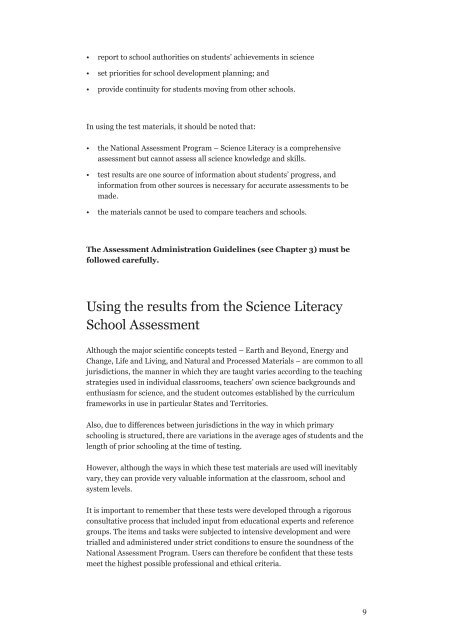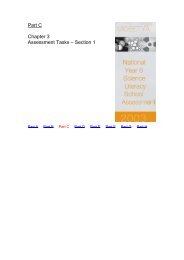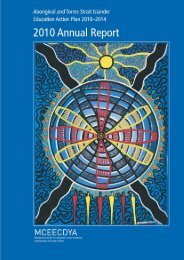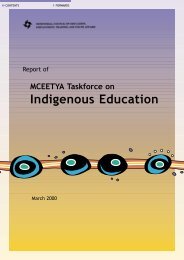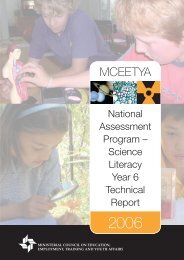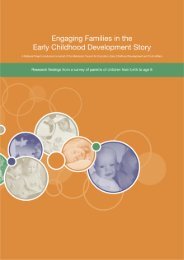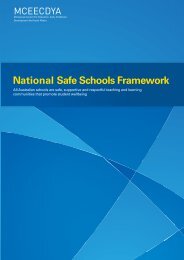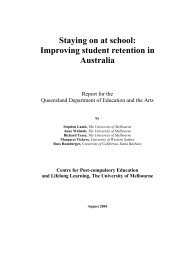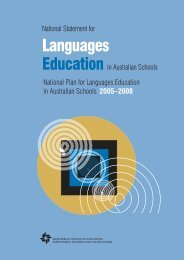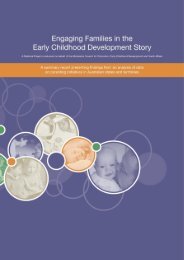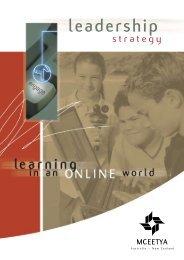Science Literacy 2006 school release materials - NAP
Science Literacy 2006 school release materials - NAP
Science Literacy 2006 school release materials - NAP
Create successful ePaper yourself
Turn your PDF publications into a flip-book with our unique Google optimized e-Paper software.
• report to <strong>school</strong> authorities on students’ achievements in science• set priorities for <strong>school</strong> development planning; and• provide continuity for students moving from other <strong>school</strong>s.In using the test <strong>materials</strong>, it should be noted that:• the National Assessment Program – <strong>Science</strong> <strong>Literacy</strong> is a comprehensiveassessment but cannot assess all science knowledge and skills.• test results are one source of information about students’ progress, andinformation from other sources is necessary for accurate assessments to bemade.• the <strong>materials</strong> cannot be used to compare teachers and <strong>school</strong>s.The Assessment Administration Guidelines (see Chapter 3) must befollowed carefully.Using the results from the <strong>Science</strong> <strong>Literacy</strong>School AssessmentAlthough the major scientific concepts tested – Earth and Beyond, Energy andChange, Life and Living, and Natural and Processed Materials – are common to alljurisdictions, the manner in which they are taught varies according to the teachingstrategies used in individual classrooms, teachers’ own science backgrounds andenthusiasm for science, and the student outcomes established by the curriculumframeworks in use in particular States and Territories.Also, due to differences between jurisdictions in the way in which primary<strong>school</strong>ing is structured, there are variations in the average ages of students and thelength of prior <strong>school</strong>ing at the time of testing.However, although the ways in which these test <strong>materials</strong> are used will inevitablyvary, they can provide very valuable information at the classroom, <strong>school</strong> andsystem levels.It is important to remember that these tests were developed through a rigorousconsultative process that included input from educational experts and referencegroups. The items and tasks were subjected to intensive development and weretrialled and administered under strict conditions to ensure the soundness of theNational Assessment Program. Users can therefore be confident that these testsmeet the highest possible professional and ethical criteria.


